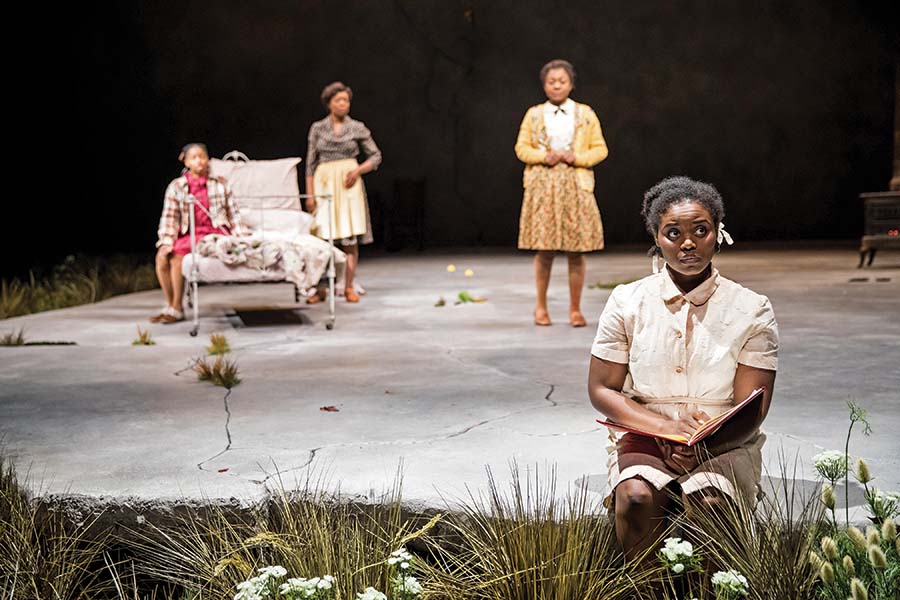On Oct. 2, 2015, Vivienne Benesch got the offer to be the next artistic director of PlayMakers Repertory Company, a $2.8 million theatre in Chapel Hill, N.C. Though she would start in January 2016, in the midst of a season planned by her predecessor, Joseph Haj, she was given a Dec. 1 deadline to come up with the following 2016-17 season.
How did she do it? Benesch says she looked to another theatre leader for inspiration: David Dower, co-artistic director of ArtsEmerson in Boston. “My bible, I will say, was David’s article in HowlRound two seasons ago about season programming,” she explains. “One of the things he said was: There is no more important public statement of a theatre’s mission and value statement than the program itself. What is the work that you’re doing?”
For new artistic directors, it’s an even more important statement, particularly if they’re inheriting institutions led by longtime leaders whose organizations have become synonymous with them and their personalities. For these successors, their first fully programmed season can be a time of push and pull, of having to balance the expectations set by the departing leader with the goals of the incoming leader.
“Most people said it takes two to three years for an organization to transition after a long period of artistic leadership,” says Snehal Desai, who last year succeeded Tim Dang at the helm of East West Players, a $3.2 million theatre in Los Angeles that Dang had led since 1993. “What I felt like Tim had done was build an audience based on his vision for the organization and his own aesthetic, taste, and preference. And that’s the audience we have currently at East West Players. So it’s going to take me some time to also build an audience around my vision for the organization, and my taste and aesthetic preferences.”
Like a debutante at her 16th birthday party, the first season programmed by a new artistic director can be seen as an emergent moment, as a way of introducing themselves to the community. American Theatre spoke to five new artistic leaders around the country, some of whom had just finished their first season, some who were in the midst of it, and others just entering the fray. They spoke about risks, compromise, and what they’re learning along the way about audiences, institutions, and most importantly themselves.
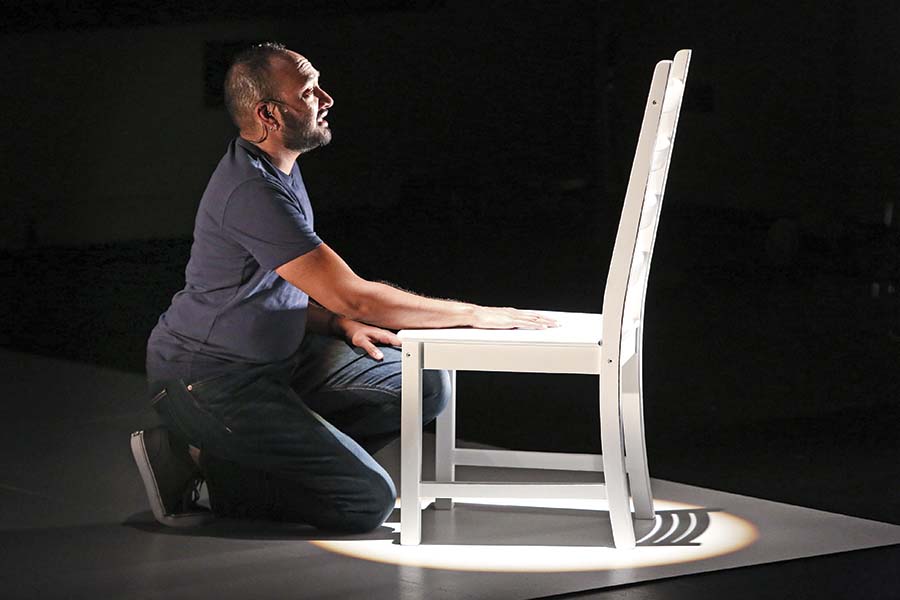
Post-it, Make It Stick
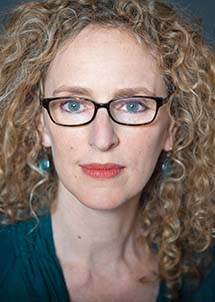
When Benesch was tasked to plan her first season at PlayMakers Rep, she did it with the help of a certain office supply: Post-its. She recalls sitting in her studio apartment in New York City (Benesch is a lifelong New Yorker) with “all of these Post-its with everything that we care about.”
As any artistic director knows, planning a season isn’t just about putting the shows you love onstage, though that’s a central part of it. Those sticky notes also contained essential practical questions such as: Do we have the budget for this show? How many classics should we program? How many new plays? Can students come see this as a matinee?
For PlayMakers, another consideration is education. Because the theatre is housed at the University of North Carolina, Chapel Hill, the theatre’s productions need to employ those students. For example, “I can’t program a season of all-new work, because the costume construction department—they need to do classical work,” explains Benesch.
In her first season, 2016-17, Benesch delivered nine shows that mixed well-known classics (My Fair Lady, The Crucible) and revivals of newer plays (Detroit ’67, Intimate Apparel). The latter are a particular focus for her, which sets her apart from predecessor Joseph Haj (now the artistic director of the Guthrie Theater in Minneapolis; more on him below). PlayMakers is “known as a great classical theatre,” she explains. “And Joe took that and lifted that up because he is a huge proponent of the classics.” What Benesch is trying to do now, though, is “shake it up and say, ‘Yes, the classics—and let’s make sure PlayMakers is also in the conversation of new work, of political work, of reflecting America as it actually is.’”
The first show in her first season at PlayMakers was the world premiere of Draw the Circle, by transgender artist Mashuq Deen, about his experience coming out to his Muslim family. That play was presented around the same time that North Carolina passed its controversial “bathroom” bill, which mandated that trans people had to use bathrooms that match the gender on their birth certificate. From the outset, Draw the Circle announced who Benesch was and what audiences could expect at PlayMakers. “I’m so thankful that that was the first thing to mark my tenure,” she enthuses.
This emphasis on new work didn’t sit well with everyone. “There are some subscribers who are not resubscribing because of that shift,” Benesch admits, chagrined. Those who stuck around, though, showed up in droves for the season ender My Fair Lady, which ended up the most financially successful show PlayMakers had done to date.
Benesch describes her second season, which started in August, as “much riskier,” with “more premieres, more world premieres, more work generally in development,” she says. And there’s no huge crowd pleaser along the lines of My Fair Lady, unless you count Tartuffe and Kate Hamill’s irreverent adaptation of Sense and Sensibility, alongside such offerings as Leaving Eden by Mike Wiley, a world premiere about racial tensions in North Carolina. Will audiences love it? Benesch hopes so, but in the meantime, she’s open to learning along the way.
“I hope the lessons that I learn don’t make me cautious,” she muses. “I just hope they make me more nimbly creative. I want to be smart and nimble and forward-thinking and hope, as Zelda [Fichandler] always said, that the art will always ultimately bring the money. You can’t go for the money and then figure out your art.” She pauses, then adds with a laugh. “That’s a horrible paraphrase of Zelda Fichandler!”
Season highlight: Tartuffe by Molière, in rotating rep with The Christians by Lucas Hnath (Feb. 3-March 11, 2018). “I’m incredibly excited about doing The Christians in a major Southern institutional theatre,” says Benesch. “I hope people go, ‘Oh my God, this is a subject that so many people of faith in any religion can really identify with.’ Especially right in this moment, in these stressed times, these moments of doubt—the way Lucas Hnath kind of opens up how we deal with doubt and what the power of doubt is. And putting that in conversation with Tartuffe, about what is faith and what is following today?”
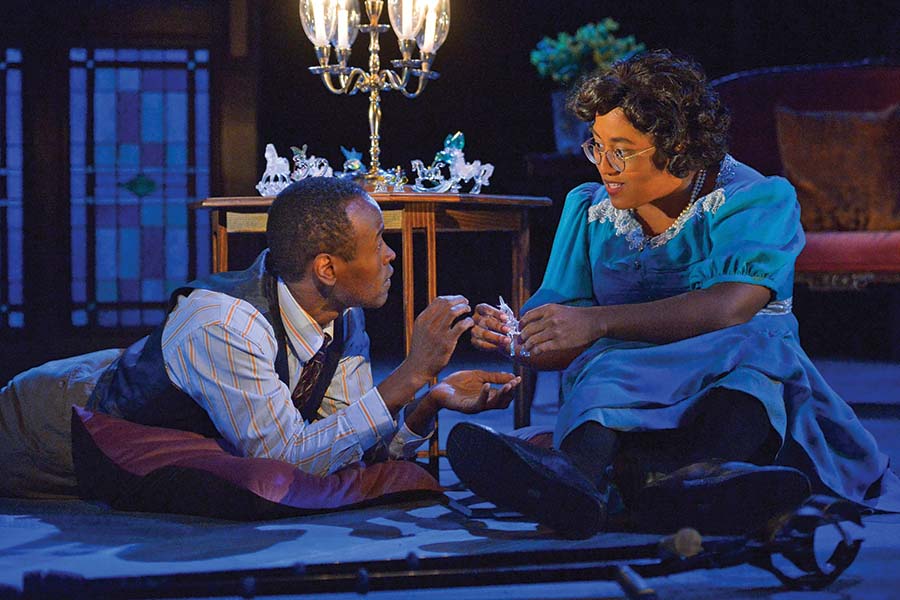
A New Mix, Growing Pains
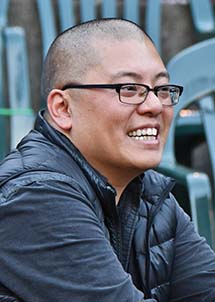
Mixing the old and the new is a particular challenge for Eric Ting, currently nearing the end of his first fully programmed season at California Shakespeare Theater, a $5 million classical summer thea-tre in Orinda, Calif. He took over for Jonathan Moscone, who had led the theatre for 15 years.
When we spoke on the phone, Ting was in the midst of a small controversy. His first season, in summer 2017, contained four shows. One was The Glass Menagerie by Tennessee Williams, directed by Lisa Portes, who cast the Wingfields as an Afro-Latinx family, and had Laura played by an actress (Phoebe Fico) with a mobile disability. Suffice to say the reception wasn’t entirely positive.
“We heard a few comments about our casting choice for Glass Menagerie,” Ting remarks delicately. “Frankly, I was expecting those. I’ve been more appreciative of all the many comments we’ve gotten [from audiences] who loved the choices.”
As a Chinese-American director from the “new-play world,” as he puts it, Ting has felt the growing pains of taking over a predominantly white, classics-oriented institution with predominantly white audiences, and trying to diversify all of the above. He defines his challenges open-endedly as “how to take those different perspectives of the theatre and begin to move them so we can transcend the perceived barriers of Shakespeare, to create a space that could feel as inclusive and welcoming and inviting to as many people as possible, to reflect an audience that is generally in the Bay Area.”
For his first season, Ting made sure that 50 percent of the acting company comprised artists of color. “I don’t think it’s ever happened at Cal Shakes before,” he remarks. Diversity also extended to the directors’ pool, who were predominantly women in the 2017 season. Ting is also incorporating more living writers into the classics-centered repertoire with something he’s calling the New Classics Initiative, in which Cal Shakes presents adaptations of classics by living writers. This season, he presented Marcus Gardley’s version of Homer, black odyssey, which turned out to be one of the most successful shows ever at Cal Shakes.
For some patrons, these changes have been too much too fast, and Ting admits that there’s been a drop in subscriptions. “What I’m finding, with a classical theatre in particular, there are very strong perspectives from a lot of different angles,” he notes. “On the one hand you have people who believe Shakespeare should be produced with only men in Elizabethan dress in front of an Elizabethan set. On the other side you have folks who aren’t interested in a dusty old thing.” He adds, “I think that the reason it takes three years for an artistic director to get settled is it takes that long to even begin to know who your audience is.”
Because it’s the first time Ting has run a theatre—he previously worked as an associate artistic director at Long Wharf in Connecticut—he’s learning that he has a responsibility both to long-term subscribers and to the newer, more diverse faces he’s trying to bring in. And there’s the rub: trying to manage the expectations of those two, ostensibly disparate groups, as well as his own artistic interests.
“I just believe homogeneity is dangerous,” he says. “If we all surround ourselves with people like us, we’re never going to grow. For me, this idea of diversity and pluralism is not about equity, it’s not about justice, it’s not even about art. It’s about being better people, about being fuller and richer, and being more human.”
Season Highlight: Measure for Measure (Sept. 13-Oct. 8), directed by Tyne Rafaeli. “Tyne described Measure as a tragicomedy about political regime change,” says Ting, before quoting Rafaeli. “‘This is a play about the experience of being ruled—at a time when electorates are increasingly uncertain about the easy certainties of their leaders.’ Tyne brings an unflinchingly modern gaze to the work that really just thrills me.”
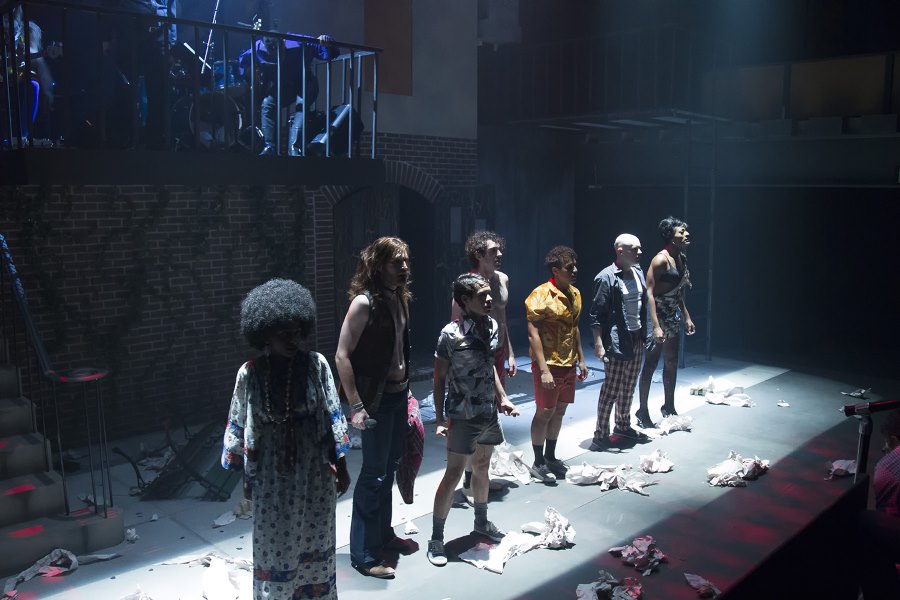
Hit the Ground Running
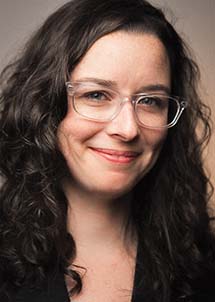
Since Joanie Schultz relocated from Chicago to Texas to run the $1.7 million WaterTower Theatre in the Dallas suburb of Addison, she’s received some interesting comments from patrons.
“They’re like, ‘You seem so young to be the artistic director,’ and I’m like, ‘The president of France is the same age as me, it’s totally fine,’” says Schultz, who’s 39, with a laugh.
In this case, relative youth is an asset. When producing director Terry Martin, who had led the theatre since 1999, stepped down last May, the board sought someone who might bring in new audiences.
“Even though it was doing diverse work, [WaterTower] had become pretty specifically known for doing a couple of things and having this completely white, older audience,” she explains. “Which is one of the reasons they brought me down here, to try and expand the audience.”
Schultz came in with a bang. One of her first moves was to replace a previously announced production of Sunday in the Park With George with a new play by Chicago scribe Ike Holter, Hit the Wall, about the Stonewall Riots. It ran in August.
“It caused a lot of stir among our subscribers, and announced me and my presence in the community in a pretty different way than people are used to seeing at this theatre,” she says. The gamble paid off: Hit the Wall attracted a younger and more diverse crowd. “Everybody in my front-of-house staff has been marveling at the amount of people they have never seen at WaterTower Theatre before,” says Schultz.
But Schultz isn’t just catering to new audiences. As she was considering the job, she polled many subscribers to ask them what they loved about WaterTower. “The model of WaterTower is a regional theatre model of, we’re going to do a lot of different things: a comedy, a drama, a musical, something really new, and something maybe old,” explains Schultz.
Her first season, for 2017-18, sticks to that formula. Somewhat. Of the six plays, all of the writers are living (the closest to a classic being Kate Hamill’s adaptation of Pride and Prejudice) and there are two world premieres. There is also an inaugural new works festival called Detour (March 1-4, 2018), which will feature a mix of local and national writers. Schultz wants to start developing new work at WaterTower.
“Dallas is a really interesting area right now, because—talk about front lines of the culture wars,” explains Schultz. “And I think that the artists of this area have something to say, not just to this area but to the rest of the country, and I’m excited to be able to propel some of that work into the world.” She adds happily, “I have some big dreams for us! And I think it’s really possible here.”
Season Highlight: The world premiere of Bread by Regina Taylor (April 13-May 6, 2018). “It’s about a South Dallas family,” says Schultz. “It’s the last days of the Obama administration, the wife is pregnant, but they have a 17-year-old son who’s about to be an adult, and they’re trying to plan for a really uncertain future. It tackles gentrification, which is a really big issue in Dallas right now, and how one plans for an uncertain future with their family. It’s like a good, classic American play.”
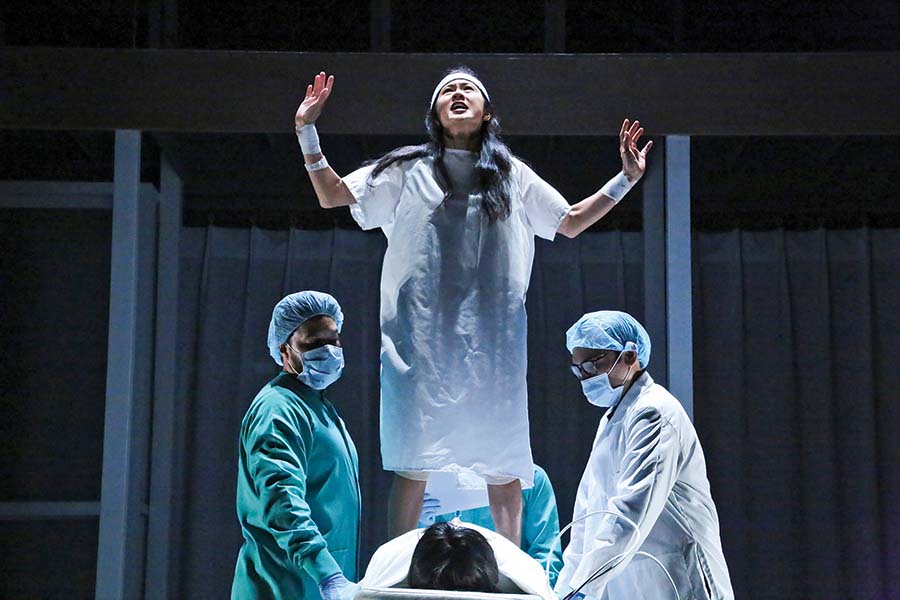
At the Intersections
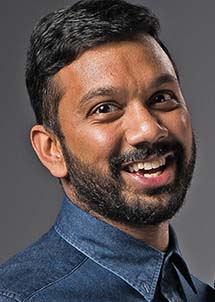
Last year, when Snehal Desai was hired to be the artistic director of East West Players in Los Angeles, he pitched a three-year plan to the board. Over three years, he told them, he would gradually transition current audiences from the work to which they’d become accustomed to work that was more experimental in form and presentation. Then Donald Trump was elected president.
“After November, the world shifted and changed,” Desai explains. “In doing so, the urgency of some of the things that I felt was important for us to talk about shifted also.” EWP is an Asian-American theatre known for its “work in diversity, and pushing the envelope toward that, as well as visibility,” Desai says. “And I felt after November, it was about visibility—to make sure we aren’t forgotten and relegated to the sidelines. And to me more than anything, community mattered: Who stands with us, who are our allies, who are our friends? Who do we support? Who do we want to lift up?”
So the 2017-18 season, Desai’s first full program, he gave the theme “the company we keep.” It is a season entirely of co-productions, a first for EWP. The partners include the Rogue Artists Ensemble (a devising company), the Robey Theatre Company (an African-American company), Japanese American Cultural & Community Center, the Los Angeles LGBT Center, and Center Theatre Group, L.A.’s biggest theatre, where EWP has an associate producer credit on the world premiere of David Henry Hwang’s play Soft Power.
In addition to Soft Power, some of the season’s productions will be mounted outside of EWP’s 200-seat home. For example, Kaidan with Rogue Artists promises to be an immersive experience, staged in a six-story warehouse. “I wanted to build our audience in a way that they would be open to new theatrical experiences also, to things that are offsite,” says Desai.
But the main focus of his first season is intersectionality. “One of the things I’m trying to do is to continually try to expand our tent of who this is a home for,” he explains. As the leader of the longest-running theatre of color in the country, which turns 52 this year, Desai feels a responsibility “to all people of color,” not only Asians.
“I think what’s important is for East West Players to be an inclusive place where we can bring our whole selves in,” he explains. “That often means not just being Asian-American, but being Asian-American and being gay, or having mental health issues or a disability. For East West Players to be inclusive of all those different communities, that’s how we’ll continue to stay relevant and timely.”
Season Highlight: Allegiance, a musical about the Japanese internment by Jay Kuo, Marc Acito, and Lorenzo Thione. It will be the first production of the musical since its 2015 Broadway run, and will again star George Takei. “It’s been an opportunity for the show’s creator to revisit the piece post-Broadway,” says Desai. “I felt like it was important for us to concentrate on the story, so we’re going to condense it down to 15 actors, and really, really focus in on the story and the characters and that journey as it’s happening.” Desai, who will direct, says the show will have “a revisioned aesthetic and have a little more of a modern edge to it.”
Plural Potential
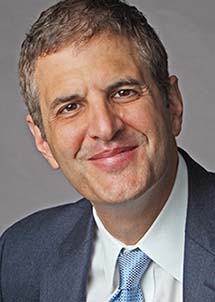
In taking over the storied Guthrie Theater from Joe Dowling, who ran it for 20 years, Joseph Haj had the chance to make a uniquely smooth transition: The 2015-16 season was co-programmed by the two Joes.
“Part of what was very wonderful about planning a season together was to learn from Joe’s 20 years of experience programming at the Guthrie, and 10 years’ experience of programming in this complicated building where there is an 1,100-seat thrust, 700-seat proscenium, and a versatile studio space,” explains Haj. This handoff was especially important given the Guthrie’s $28 million budget. “It’s the biggest theatre almost anybody has ever run!” Haj exclaims. “It is almost exactly 10 times larger than PlayMakers Rep.”
Because of its massive size and various venues, the Guthrie is “necessarily eclectic,” says Haj. It usually presents a mix of classics, musicals, and contemporary work. The 2016-17 season, Haj’s first, contained a whopping 19 shows, so it’s hard to get him to pinpoint how his aesthetic drove it in any one particular direction (“I’m all about the classics,” he offers). Some highlights of Haj’s first season included King Lear, Native Gardens by Karen Zacarías, and Sunday in the Park With George.
What truly set his season apart was who was onstage and behind the scenes. “We created a rule at the Guthrie: There’s no such thing as a homogeneous creative team,” says Haj. “My first conversation with the directors is: Start thinking now about your creative team. They can’t be all white, they can’t be all guys, they can’t all have gone to Yale.”
In his first season at the Guthrie, of nine mainstage productions four had female authors (two of them women of color) and one by a man of color. There were nine female directors out of 19 shows, the most ever at the theatre. “In my experience, the work is demonstrably better, demonstrably so, when there are a plurality of voices coming to bear.”
Another new emphasis is the formation of the Level Nine Initiative. In the past the Guthrie had hosted local companies in its studio space, but with Level Nine, the Guthrie has set out to commission and develop works by a different devising theatre ensemble every three years. The Twin Cities-based Moving Company was the inaugural recipient, and they presented Refugia on the Guthrie’s mainstage this past spring after developing it in the studio. The access is outward-facing too: All tickets to the Studio shows are $9.
So far, so good: Haj’s first season was well received, and box office and subscriptions grew. Haj hopes to continue riding that wave of goodwill. But he is also hyper-aware that as the only person of color running a theatre of the Guthrie’s size (he is Palestinian-American), he faces unique expectations.
“I think for people of color in our game, this appointment was a very important one, so there’s enormous self-applied pressure,” he admits emphatically. “I cannot fail. I cannot fail. Because it will be an example for somebody that brown people can’t run organizations of this scale.”
That’s the big existential worry, but on the day-to-day level, Haj says, “I’m not here to right all of the real or perceived wrongs of the American theatre, even of the Guthrie Theater. I just see the world the way I see it, and I see the art the way I see it, and I care about the things I care about. That includes a kind of work that I think is diverse and plural and inclusive in ways that are satisfying to me, and satisfying for the community that we’re charged to serve.”
Season Highlight: An Enemy of the People, adapted by Kia Corthron (April 28-June 3, 2018). “It’s Ibsen’s 1880s play but done in a contemporary version,” says Haj. “It’s a story of a town that is so grateful for its economic great fortune, and they find out the water is poisoned. It’s just so in the river, no pun intended, of our current political moment, our current environmental moment. ‘An enemy of the people’ is a term that’s been used explicitly by this administration about journalists and those who are trying to tell the truth.”

